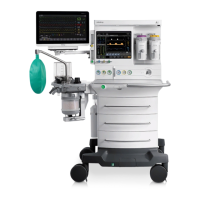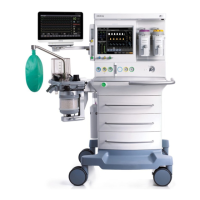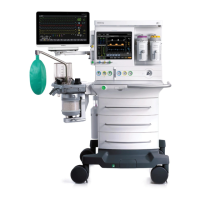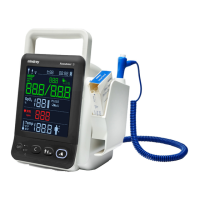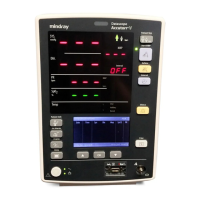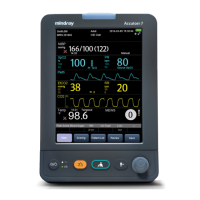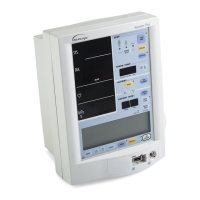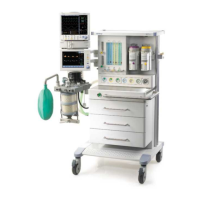6-20
Display 35
The air supply pressure
is low.
1. Replace or connect a gas supply.
2. If the gas supply is
normal, check the gas supply
pressure switch.
Display 37
connected.
1. Check whether the alarm "O2 Sensor Disconnected"
is displayed. If yes, check whether the O2 sensor is
installed in the O2 sensor holder. Reconnect the
cable of the O2 cell.
2. Check whether the output voltage of the O2 sensor is
stable in the calibration menu
(that is, the AD value ranges from 150 to 560 at 21%
O2 and ranges from 523 to 2123 at 100% O2).
3. Replace the O2 sensor.
Display 38 The O2 sensor fails.
1. Check whethe
r the alarm "Replace O2 Sensor" is
displayed. If yes, check whether the O2 sensor is
installed in the O2 sensor holder. Reconnect the
cable of the O2 cell.
2. Check whether the output voltage of the O2 sensor is
stable in the calibration menu (that is, the AD value
ranges from 150 to 560 at 21% O2 and ranges from
523 to 2123 at 100% O2).
3. Replace the O2 sensor.
Display 39 Table saving fails.
1. Perform the calibration again.
2. Replace the VCM.
Display 3B
turned on.
Turn off the ACGO switch.
6.3.3 Flowmeter Zeroing (User)
6.3.3.1 Principles
After the gas supply is disconnected, zero offset may occur in the sensor of the EFCS flowmeter
if the pointer of the pressure gauge returns to zero but the EFCS flowmeter still displays a
non-zero flow value. You can zero the flowmeter manually to immediately eliminate
measurement deviations caused by zero offset.
The principles are as follows: Close the air, O2, and N2O branch proportional valves when
starting zeroing. Switch the three-way valve to the BFCS state. Read the actual flows measured
by the Sensirion flow sensors in the three branches and use them as zero points of the three
branch flow sensors. Switch the three-way valve to the EFCS state, and the zeroing ends.
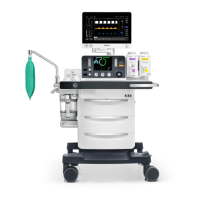
